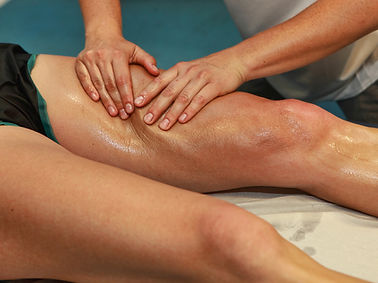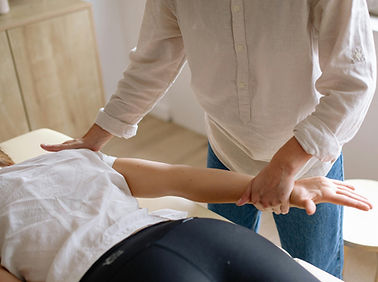
General Outline of Massage Modalities
Massage therapy consists of a range of dedicated techniques aimed at relieving muscle tension, improving a sense of well-being, and promoting general relaxation. Different modalities target specific outcomes, enabling the therapist to customise a treatment to benefit the individual.
Sports Massage

Sports massage is specifically aimed at athletes to better prepare the body for sports events and aid in post-event recovery. Specific methods are aimed at enhancing overall performance and dealing with subsequent muscle soreness. A sports massage is very different from a regular massage. It is far more rigorous and is tailored to the needs of the individual or their type of injury.
-
Soft tissue manipulation
The manipulation of soft tissues—muscles, ligaments, tendons, fascia and skin—aids in correcting imbalances and injuries resulting from physical activity.
-
Techniques
Some of the techniques applied in sports massage therapy are: i) neuromuscular massage techniques (NMT), ii) deep transverse friction (DTFM), iii) soft tissue release (STR), iv) trigger point therapy, and v) facilitated stretching.
-
Benefits
-
Sports massage can assist with the following:
-
Pre-event massage can aid in the prevention of injuries.
-
Techniques utilised during a pre-event massage such as facilitated stretching, etc. can help increase flexibility.
-
By reducing muscle fatigue and improving circulation, sports massage can contribute to enhanced performance.
-
A pre-event massage can contribute to increased endurance.
-
Sports massage can speed up post-event recovery by treating factors associated with the aftermath of strenuous physical activity, such as inflammation, muscle soreness, and tension.
-
-
This is a massage therapy specifically aimed at treating injury and pain, coupled with rehabilitation. A range of techniques treat muscles, connective tissues, ligaments and tendons. It can also be used for relaxation. If you have a medical condition or are taking medications, it is preferable to consult your physician before coming for a remedial massage. You must inform your massage therapist of any health issues you may have or any past injuries. The therapist will then be able to tailor their treatment to suit your specific needs.
Remedial massage can assist with the following problems:
-
Pain resulting from injuries, headaches, chronic conditions, etc.
-
Tension resulting from long periods of inactivity or sitting.
-
Massage can assist in stress relief and help improve sleep.
-
Regular massage can help maintain general health and muscle flexibility, particularly for physically active people.
Remedial Massage

Deep Tissue Massage

This is an intense massage that will focus on areas of pain, stress and discomfort, such as the neck, shoulders, back, buttocks and legs. The technique combines a series of slow strokes, deep pressure and finger pressure to release tension and tightness in muscles and connective tissues. A typical deep tissue massage session usually takes an hour to an hour and thirty minutes. The massage should not be painful although it is normal to feel a little sore after a treatment session. There might be some discomfort during the session due to the hard pressure on the muscles which would normally not be manipulated like that.
The benefits to be gained from a deep tissue massage are:
-
Relieving soreness resulting from injury, tension or imbalance.
-
Releasing tension resulting from stress and anxiety.
-
Improvement of mental and physical well-being.
Soft Tissue Release Technique
Soft tissue release technique releases pain and tension in muscles and connective tissue. This technique consists of methodical pressure to specified areas of tension succeeded by active or passive stretching to release scar tissue and adhesions. Soft tissue release is frequently used by physiotherapists, chiropractors and massage therapists to target a whole range of conditions, some of which are the following:
-
Myofascial pain syndrome;
-
Muscle pain and tension;
-
Adhesions and scar tissue; and
-
Restricted range of motion.

